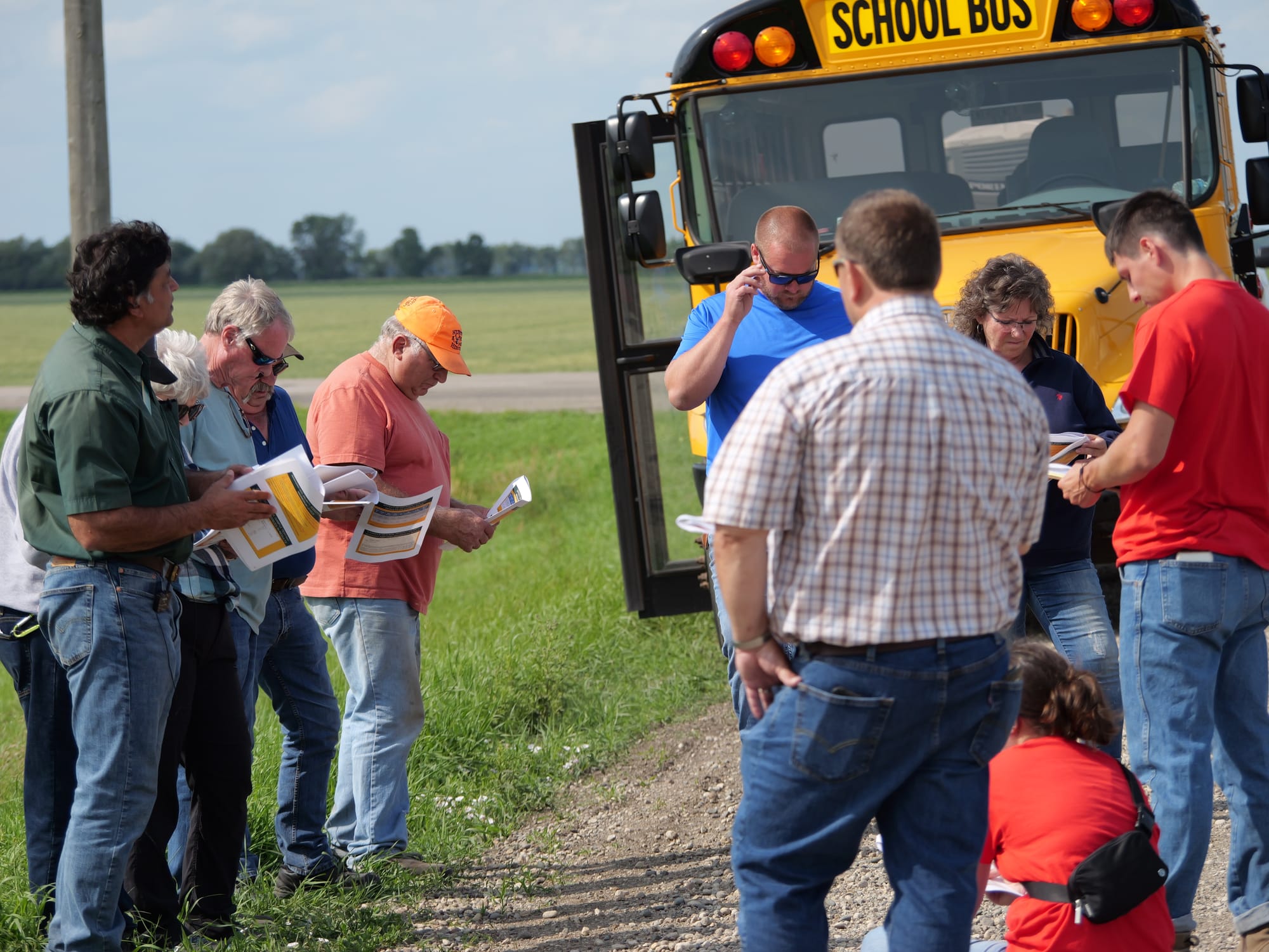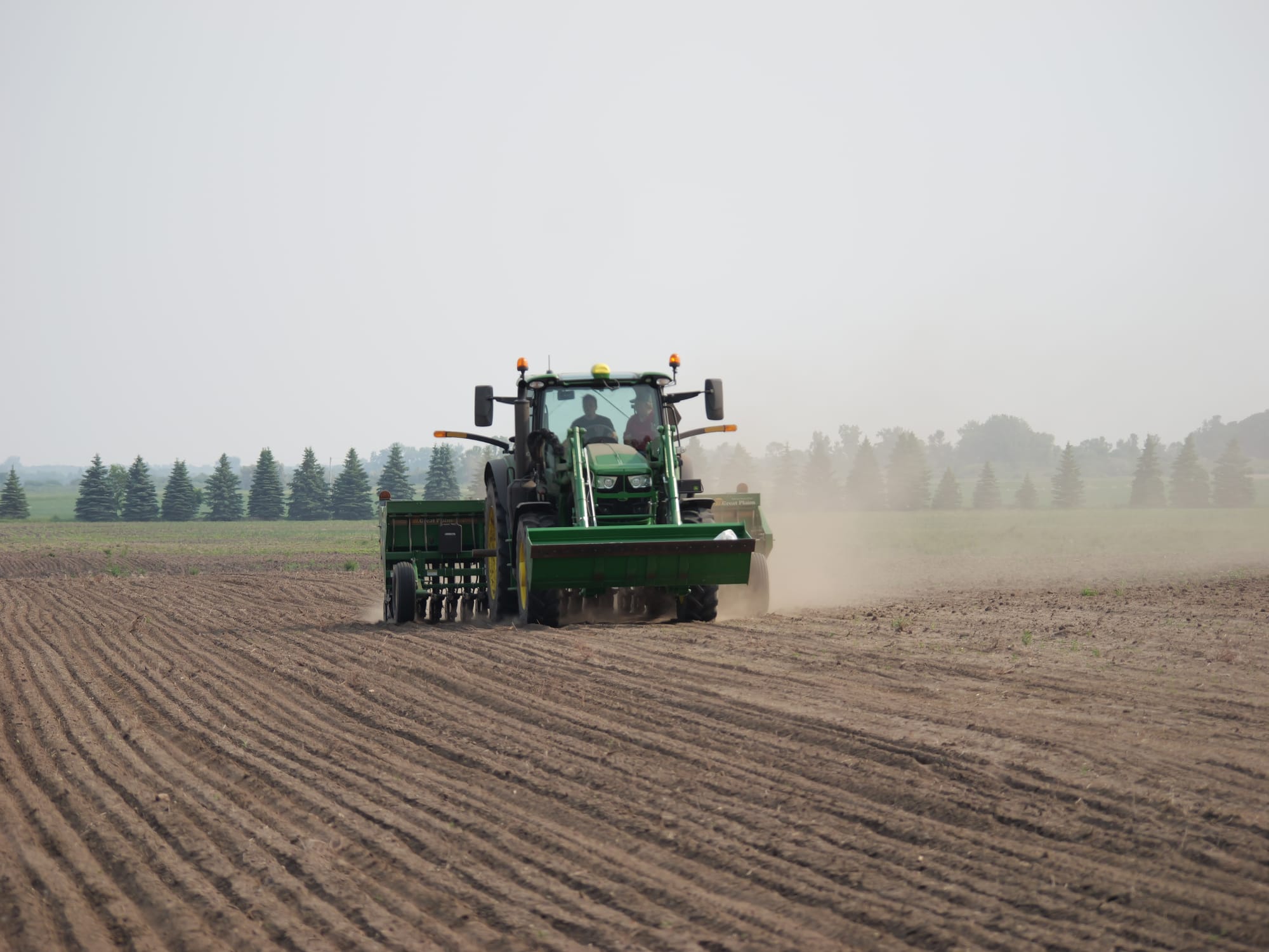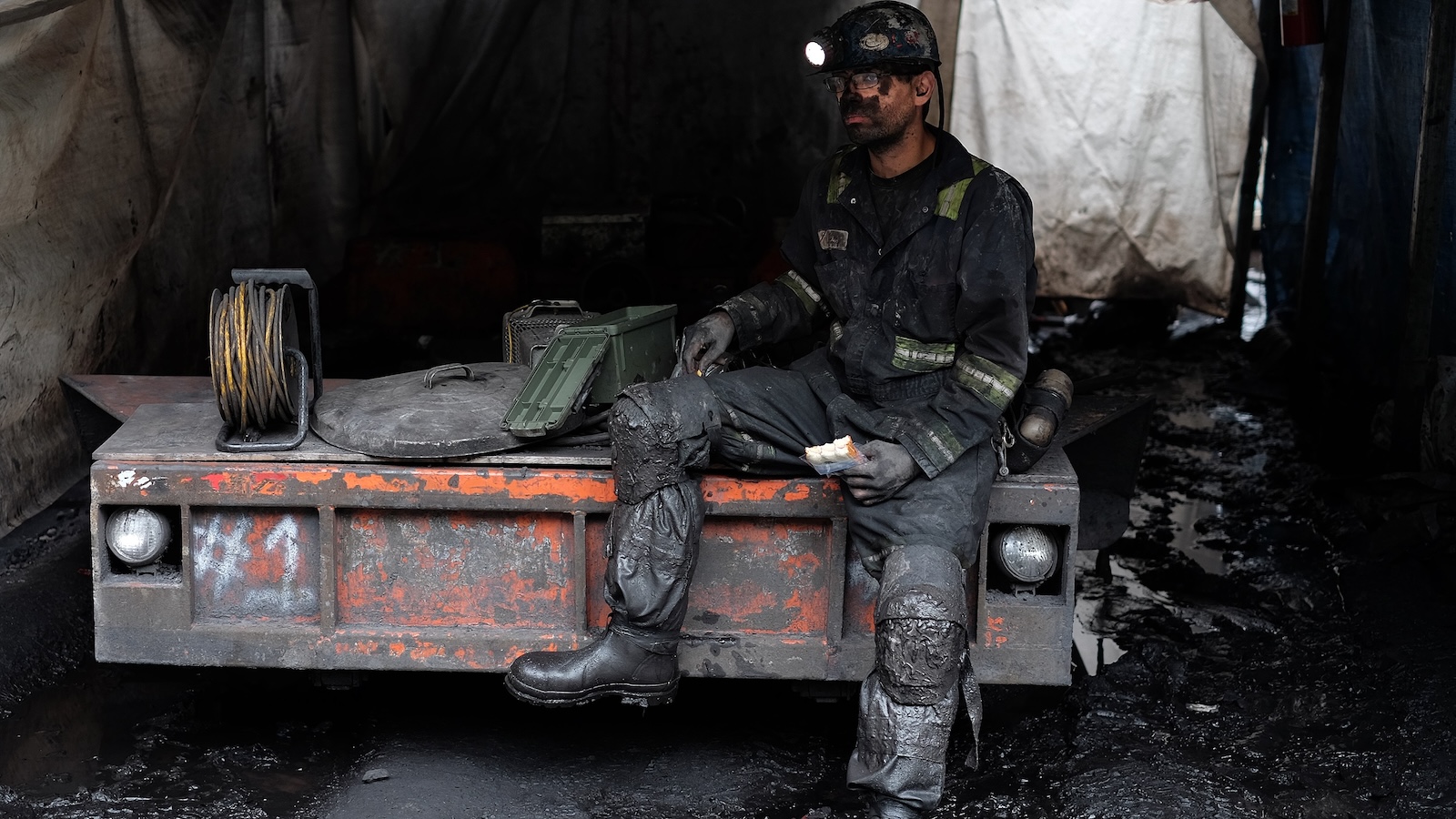Amy Cronin DiCaprio’s son, now 14, was born with congenital heart and lung defects. He underwent major surgeries in infancy, including one to remove a lobe of his lung, and open heart surgery just two weeks later. She said he suffers from significant behavioral health challenges as well and is on several prescription medications.
For health insurance, Cronin DiCaprio, a mother of two, relies on MassHealth — Massachusetts’ program that administers both Medicaid and the Children’s Health Insurance Program, or CHIP. For her and her family, those programs are the only way they can receive health care.
“If we lost MassHealth, we just wouldn’t be able to do that anymore,” she recently told The Shoestring, warily twisting a ring on her finger. “We would just… there’s no way we could afford it.”
Those are very real fears for Cronin DiCaprio and millions of others across the country.
President Donald Trump and Republicans are currently preparing a budget that seems certain to contain significant cuts to Medicaid and CHIP, which some 2 million Massachusetts residents rely on through MassHealth. Nationwide, another 72 million Americans receive coverage through Medicaid.
These programs provide critical health services for individuals and families like Cronin DiCaprio’s. Currently unemployed after working in the non-profit public health sector, she said her home is in preforeclosure and the prospects of her family losing health coverage at this time is “terrifying.”
“Masshealth has been amazing in terms of being able to see specialists,” Cronin DiCaprio said. Her eldest son relies on continuous follow-up care including annual heart screenings, visits with pediatric pulmonology specialists, behavioral health specialists, and prescription medications.
Now, state and national lawmakers, human rights groups, and ordinary people are raising serious concerns about the future of these programs under the current presidential administration.
“The threats are real, and I don’t want to minimize the threats and the amount of money on the table,” Massachusetts State Sen. Jo Comerford, D-Northampton, told The Shoestring in a phone interview. “It is a hole that is unfillable by the state when we look at all of the other major holes that have emerged from reckless and dangerous Trump administration actions.
Comerford said she “can’t minimize the devastation” of Trump and Republicans’ massive cuts to federal programs.
“We’re seeing rollbacks across every agency we care about,” she said.
***
During the first week of his presidential term, Trump caused far-reaching confusion, outrage, and fear with a slew of executive orders and an Office of Management and Budget memo that froze federal funds. The wording of the memo said that agencies whose work was in any way contradictory to the new ideology, outlined in the president’s executive orders, would need to find and assess those contradictions so the presidential administration could then decide the best uses for the funding “consistent with the law and the President’s priorities.”
Following the OMB memo, states reported being “cut off” from access to Medicaid systems. States regained access shortly afterward and the federal government has claimed that was caused by a technical “outage.”
Just a few days later, Trump’s billionaire buddy and the country’s biggest campaign donor to Trump and Republicans, Elon Musk, and his band of teenage and early 20’s tech bros who constitute the so-called Department of Government Efficiency were given access to the Centers for Medicare and Medicaid services. They reportedly accessed key payment and contracting systems. This further compounded public and legislative fears that Medicaid and Medicare programs would be targeted for significant cuts.
The OMB memo has since been rescinded, but challenges in accessing federal funding have continued for many of its recipients.
In the weeks following, Republican lawmakers in the U.S. House of Representatives voted to advance a budget proposal that directs the Energy and Commerce Committee, which has authority over Medicaid, to find $880 billion in cuts.
Some Republican lawmakers, including House Speaker Mike Johnson, have since claimed these proposed federal funding cuts will not affect Medicare, Medicaid, or Social Security because the budget plan passed on Feb. 25 does not specifically contain the words “Medicare,” “Medicaid,” or “Social Security.”
Many experts have said this is misdirection, noting that it would be a near financial impossibility to make the proposed cuts without taking from at least one of those programs.
“Both Speaker Johnson, other House Republican leaders and President Trump have said that they do not want to cut Medicare,” Georgetown University health policy expert Edwin Park recently told NPR. “So if you take Medicare off the table, Medicaid constitutes 93% of all mandatory spending that remains under the jurisdiction of the Energy and Commerce Committee.”
This conclusion from Park is also supported by a Congressional Budget Office report from March 5.
The Shoestring relies on reader support to make independent news for western Massachusetts possible. You can support this kind of labor-intensive reporting by visiting our donate page.
When asked for an interview about the House budget in early March, Massachusetts Gov. Maura Healey told The Shoestring in a statement that the “budget resolution threatens the health care of 2 million Massachusetts residents.”
“It would nearly double health care costs for hundreds of thousands of Massachusetts residents who rely on the Affordable Care Act and increase grocery bills for more than a million children and their families by gutting food assistance,” the statement said. “The Senate needs to reject this shameful attack on the health and wellbeing of children and families in Massachusetts and across our country.”
Healey’s response outlined the categories of people receiving coverage under Medicaid programs who were vulnerable to losing health services and coverage, which included people with disabilities, pregnant people, and newborns. Healey said one in four Massachusetts residents received some form of Medicaid coverage.
While the proposal has been met with nationwide disapproval from constituents across political parties, lawmakers passed another Republican-led stop-gap spending bill on March 14 — together with support from Democrats led by Senate Minority Leader Chuck Schumer — that will fund the government through September.
Johnson and other lawmakers have defended the cuts, saying that the money will come from the elimination of “waste and fraud,” without citing any specific evidence. Musk, meanwhile, has seemingly referred to people receiving services through federal programs as “the parasite class.” Last month, he reposted a meme on social media that referred to “watching Trump slash federal programs knowing it doesn’t affect you because you’re not a member of the Parasite Class.”
***
With strict eligibility guidelines, it is hard to imagine where $880 billion worth of fraud might be in the Medicaid system.
Cronin DiCaprio and her family briefly lost coverage this past July due to missing a letter from MassHealth requiring her to update her household information and income — one of a list of annual requirements for maintaining coverage under the program.
During this gap in health coverage, Cronin DiCaprio said she ran out of prescription medications for herself and her older son, medications that cannot be stopped immediately and must be slowly tapered off. This gap came at a time during which the Fourth of July holiday closed and delayed many state and local offices.
“I was in the drive-thru pharmacy line at CVS in tears,” she said. An “incredibly kind” and “resourceful” pharmacist researched brand options and located every coupon and savings option that he could, but in the end she said she still ended up paying more than $2,000 for about two weeks of medication.
“I’m literally sitting in our house like a hysterical chemist, you know, trying to figure out how to taper him down on the antipsychotic meds that we had left so that he wouldn’t run out completely,” she said.
“It just feels like such an immovable obstacle, the cost associated with all elements of healthcare are really shocking,” she added.
Cronin DiCaprio also acknowledged a certain amount of privilege and agency due to her education — she has two master’s degrees — and her work-from-home job that allowed her to access and navigate the complex and time-consuming Medicaid system and ultimately regain health coverage for her family. Her job allowed her the flexibility to leave her phone on hold with the MassHealth system waiting to reach the relevant department staff for hours at a time on her desk while she did her regular work.
These hours-long wait times exist at current staffing and funding levels for the Medicaid program.
In addition to long wait times and complex paperwork, there are other barriers to coverage in the Medicaid system. The writer of this article, for example, receives Medicaid coverage based on disability status. This type of coverage, called CommonHealth, is re-evaluated annually, in some cases every two years. In addition to financial and residency verification requirements, Medicaid recipients of this designation must complete “disability supplement” paperwork rehashing their entire health history and seeing a state-selected provider for “evaluation.” For this writer, that is decades of health history spanning dozens of providers.
That system of “means testing” — and threats of getting kicked off disability insurance — simply doesn’t exist in the many countries worldwide that provide universal health care.
This eligibility process is not easy to navigate while living with, or caring for someone with, significant health issues. Challenges aside, if this Medicaid coverage disappeared, there is not currently an affordable health care alternative available for this writer.
While lawmakers continue to clash on spending packages, individuals and families across Massachusetts and the nation are waiting with worry and fear for their loved ones and community members.
”Even if we had to pay anything towards it, you know, we would just skip it, which is horrible to say, but that’s the position that we’re in,” Cronin DiCaprio said. “We would need to prioritize his prescriptions, you know, and he’s relatively stable in terms of his cardiac health, we would just, I don’t know, we would need to prioritize.”
***
It isn’t just patients who will suffer from cuts to Medicaid funding. Health clinics in rural Minnesota have reportedly already seen a bit of the impacts that would result from the funding cuts. During the federal funding freeze earlier this year triggered by the OMB memo, some clinics reported difficulty making payroll with some having to furlough staff.
These clinics, called community health centers, typically receive a significant portion of their operating costs from federal funding through Medicaid payments and federal grants. There are 15 community health centers here in the Connecticut River Valley, according to the Massachusetts League of Community Health Centers website, and many more across the state.
Federally qualified health centers, like CHC’s, play a critical role in providing health services, accepting patients regardless of their health insurance status, and providing services ranging from dental care to pediatric care and senior care. These centers also offer other social services like connections to food banks and housing services, which are also funded through federal grant support and contribute to community health and wellbeing. Funding cutbacks put all of these things at risk.
The loss of these centers will further burden the for-profit medical system as well. A 2020 study focused on Massachusetts concluded that federally qualified health centers, like CHC’s, increased access to health care in underserved areas and reduced spending on visits to emergency departments for non-emergency health needs.
Individual health providers will not be immune to these cuts either.
Cronin DiCaprio’s son has been seen by the same cardiologist since his open heart surgery in his first year of life. The family has been able to follow this doctor through his transition to private practice because of the MassHealth coverage at its current funding levels. Many providers will be forced to choose between keeping patients and being financially viable if cuts are made to the program.
When asked specifically what these funding cuts might look like locally, Sen. Comerford said she couldn’t speculate.
“We can certainly understand individual circumstances, but I don’t know what the systemic circumstances would be because you’d have to understand the scope from the federal government and then the state’s response,” Comerford said. Things are changing rapidly and people, families, workers, and businesses will be hurt by these actions, she added.
State Rep. Lindsay Sabadosa, D-Northampton, similarly did not have a specific answer for what the local impacts of the cuts might look like.
“It’s not looking good,” she told The Shoestring in a March 14 interview.
Sabadosa said a lot will depend on the magnitude of the cuts.
“In broad strokes, we’re talking about people losing their health insurance if the cuts are as they have indicated they may be,” she said. “Western Massachusetts has a large number of residents who are on Medicaid.”
Sabadosa was certain that Massachusetts hospitals and community health centers would feel the impacts of these cuts with many of their patients’ payments coming from Medicaid coverage.
“We won’t be able to make up for all of these losses and so we’ll have to figure out a way to try to mitigate the situation to the greatest extent possible, and it’s going to be extremely challenging,” she said.
The cuts proposed in the House budget “would likely translate to billions of dollars of revenue cuts from MassHealth per year,” a statement by Healey’s office said.
In addition to potential loss of individual health care and overall state budget impacts, Healey’s statement said “ripple effects” will include losses of jobs at hospitals and other health care positions, negative impacts on caregivers relying on long-term care services for loved ones receiving Medicaid coverage, and mounting pressure on an “already fragile health care system” potentially impacting health care access for all residents across the state.
Public outrage at lawmakers’ town halls nationwide has been so widespread it prompted Johnson, the Republican House speaker, to advise GOP lawmakers not to attend their own town halls.
When asked what was being done by elected officials in Massachusetts to evaluate and mitigate these cuts, Sabadosa said Massachusetts was “leading” in bringing lawsuits against the federal government and Trump administration in court. She also said public pressure does seem to be having some impact, and possibly stalled or reversed some actions taken by the Trump administration so far. She said people should continue to contact their federal representatives and show up to their town halls.
“Unfortunately, our federal government is not a reliable partner at the moment,” she said. “In fact, I would argue that they are abandoning the states. And because that is happening, we need more people to step up locally, however that may be, to support each other.”
Comerford had a similar response to those questions, saying Massachusetts was quickly challenging federal actions in the courts, and encouraged constituents to continue to contact her office.
“We’re fighting like hell every day to protect our people,” she said. “That is my job.
I’m gonna keep resisting and fighting and backing,” Comerford said. “We believe the state can, and should, be a line of defense and we will keep pushing.”

















.jpg?format=1000w)














